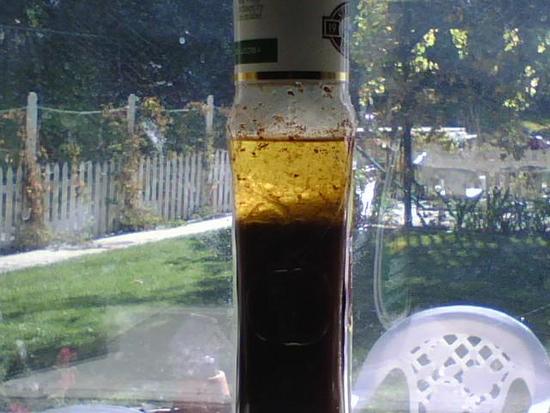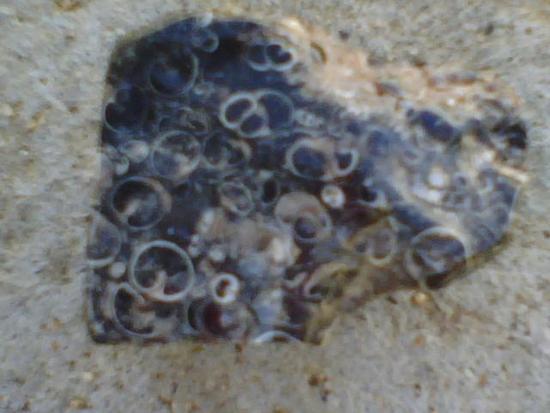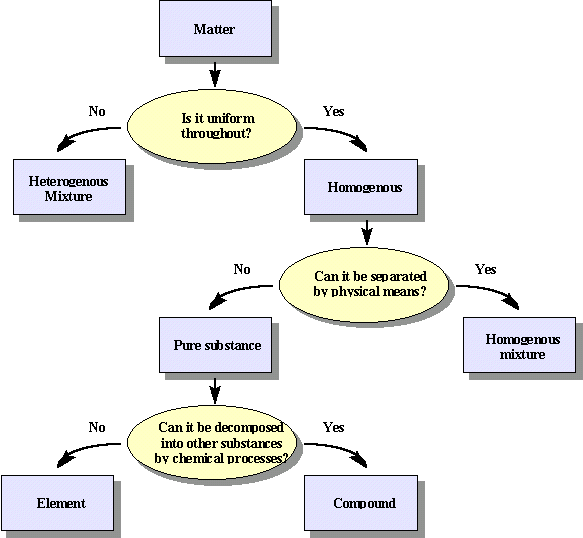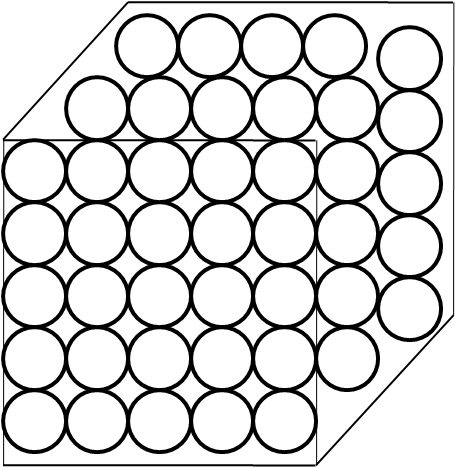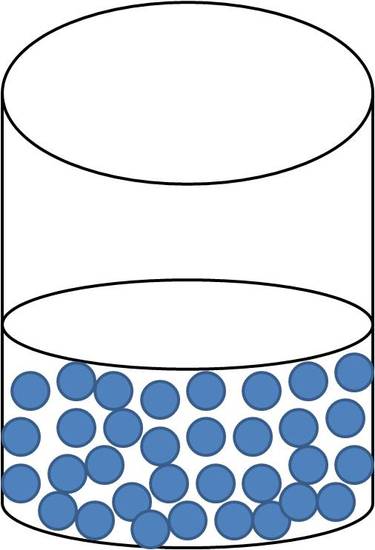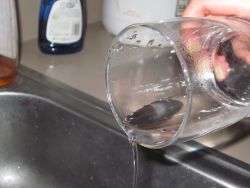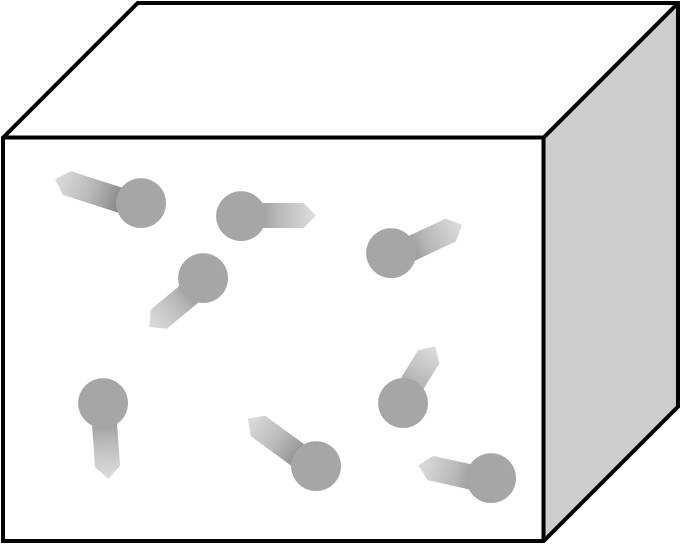VOCABULARY
OF CHEMISTRY
acid - There are several ways to define an acid,
but they include any chemical that gives off protons or H+ in water. Acids have a pH less than 7.
They turn the pH indicator phenolphthalein colorless and turn litmus paper red.
acid anhydride - An acid
anhydride is an oxide
that forms an acid when it is reacted with water. For example, when SO3- is added to water, it becomes sulfuric
acid, H2SO4.
alcohol - An alcohol is any organic molecule
that has an -OH group.
aldehyde - An aldehyde is any organic molecule
that has a -COH group.
alkali metal - An alkali metal is a metal in Group I
of the periodic table. Examples of alkali metals include lithium, sodium, and
potassium.
base - A base is a compound that produces OH- ions
or electrons in water or that accepts protons. An example of a common base is sodium hydroxide,
NaOH.
beta particle - A beta particle is an electron, although the term is
used when the electron is emitted in radioactive
decay.
buffer - A liquid that resists change in pH when an acid or base is added. A
buffer consists of a weak acid and its conjugate base.
An example of a buffer is acetic acid and sodium acetate.
calorimetry - Calorimetry is the study of heat flow.
Calorimetry may be used to find the heat of reaction of two compounds or the
heat of combustion of a compound, for example.
carboxylic acid - A carboxylic acid is an organic
molecule containing a -COOH group. An example of a carboxylic acid is acetic
acid.
catalyst - A catalyst is a substance that lowers
the activation
energy of a reaction
or speeds it up without being consumed by the reaction.
crystal - A crystal is an ordered, repeating
three-dimensional pattern of ions, atoms, or molecules. Most crystals are ionic solids,
although other forms of crystals exist.
delocalization - Delocalization is when electrons
become free to move all over a molecule, such as when double bonds occur on
adjacent atoms in a molecule.
denature - There are two common meanings for this
in chemistry. First, it can refer to any process used to make ethanol unfit for
consumption (denatured alcohol). Second, denaturing can mean breaking down the
three-dimensional structure of a molecule, such as a protein is denatured when
exposed to heat.
diffusion - Diffusion is the movement of particles
from an area of higher concentration to one of lower concentration.
dilution - Dilution is when a solvent is
added to a solution, making it less concentrated.
dissociation - Dissociation is when a chemical
reaction breaks a compound into
twoor more parts.
For example, NaCl dissociates into Na+ and Cl- in water.
effusion - Effusion is when a gas moves through
an opening into a low-pressure container (e.g., is drawn by a vacuum). Effusion
occurs more quickly than diffusion because additional molecules aren't in the
way.
electrolysis - Electrolysis is using electricity to
break the bonds in a compound to break it apart.
electrolyte - An electrolyte is an ionic compound that dissolves in water to produce
ions, which can conduct electricity. Strong
electrolytes completely
dissociate in water, while weak
electrolytes only
partially dissociate or break apart in water.
endothermic - Endothermic describes a process that
absorbs heat. Endothermic
reactions feel cold.
endpoint - The endpoint is when a titration is
stopped, typically because an indicator has changed color. The endpoint need
not be the same as the equivalence point of a titration.
entropy - Entropy is a measure of the disorder
or randomness in a system.
enzyme - An enzyme is a protein that acts as a
catalyst in a biochemical reaction.
equilibrium - Equilibrium occurs in reversible
reactions when the forward rate of the reaction is the same as the reverse rate
of the reaction.
equivalence point - The equivalence
point is when the
solution in a titration is completely neutralized. It is not
the same as the endpoint of a titration because the indicator may not change
colors precisely when the solution is neutral.
ester - An ester is an organic molecule with a
R-CO-OR' function group.
exothermic - Exothermic describes a process that
gives off heat.
family - A family is a group of
elements sharing similar
properties. It is not necessarily the same thing as an element group. For
example, the chalcogens or oxygen family consists of some
different elements from
the nonmetal group.
Kelvin - Kelvin is a unit of
temperature. A Kelvin is equal in size to a degree Celsius, although
Kelvin starts from absolute
zero. Add 273.15 to a Celsius
temperature to get the Kelvin value.
Kelvin is not reported with a ° symbol. For example,
you would simply write 300K not 300°K.
ketone - A ketone is a molecule that contains a
R-CO-R' functional group. An example of a common ketone is acetone (dimethyl
ketone).
kinetic energy - Kinetic energy is energy of motion.
The more an object moves, the more kinetic energy it has.
nucleon - A nucleon is a particle in the nucleus
of an atom (proton or neutron).
oxidation number The oxidation
number is the apparent
charge on an atom. For example, the oxidation number of an oxygen atom is -2.
period - A period is a row (left to right) of
the periodic table.
precision - Precision is how repeatable a
measurement is. More precise
measurements are
reported with more significant
figures.
pressure - Pressure is force per area.
sublimation - Sublimation is when a solid changes
directly into a gas. At atmospheric pressure, dry ice or solid carbon
dioxide goes directly into carbon
dioxidevapor, never becoming liquid carbon
dioxide.
synthesis - Synthesis is making a larger molecule from two or more atoms or smaller
molecules.
system - A system includes everything you are
evaluating in a situation.
temperature - Temperature is a measure of the
average kinetic energy of particles.
valence
electron - The valence electrons are the atom's
outermost electrons.
volatile - Volatile refers to a substance that
has a high vapor pressure.





